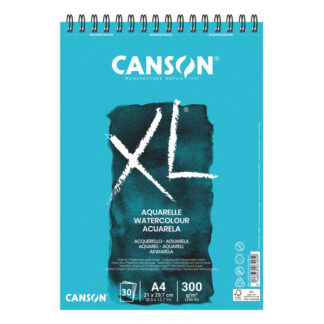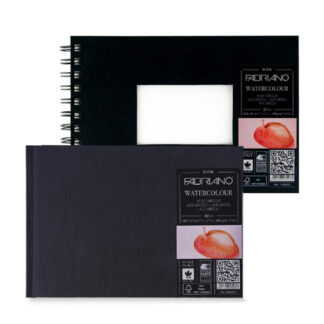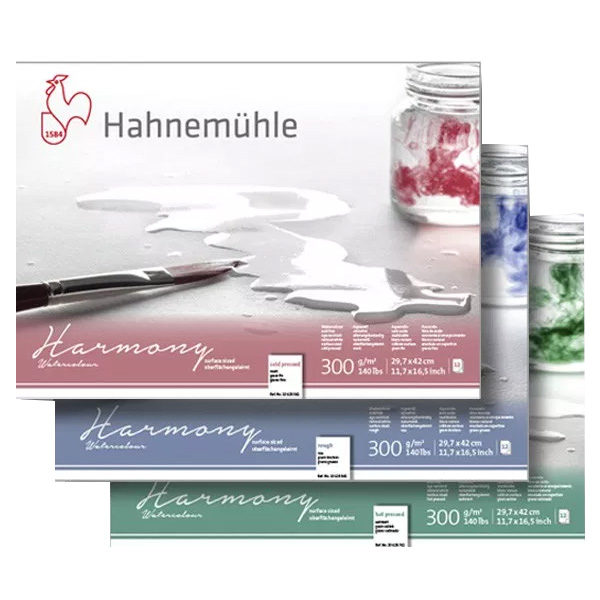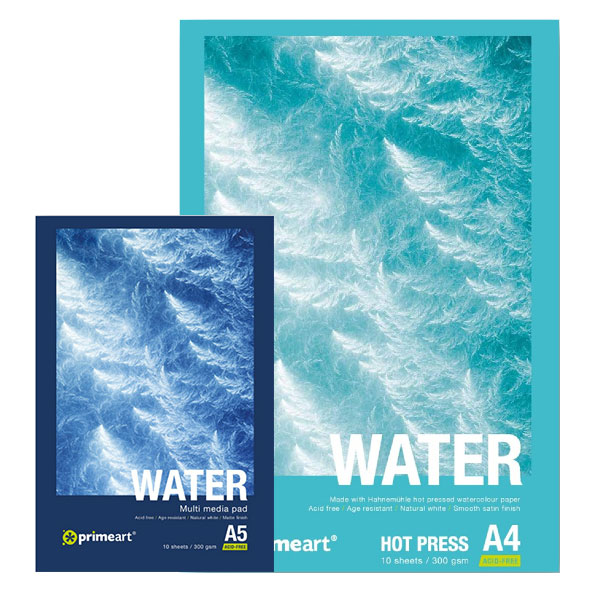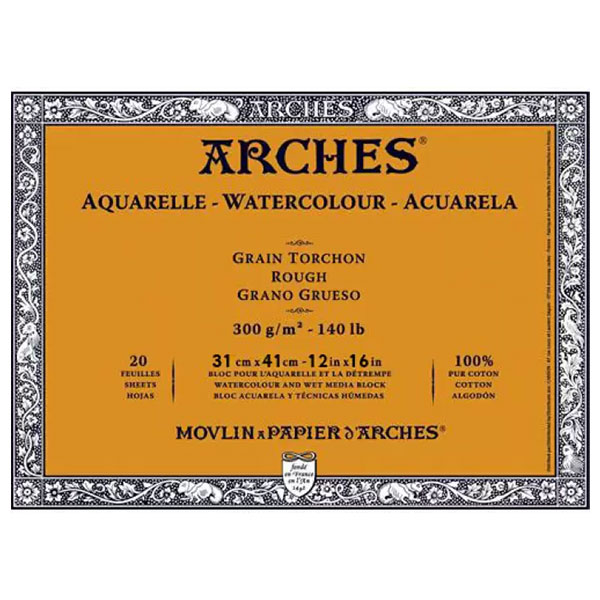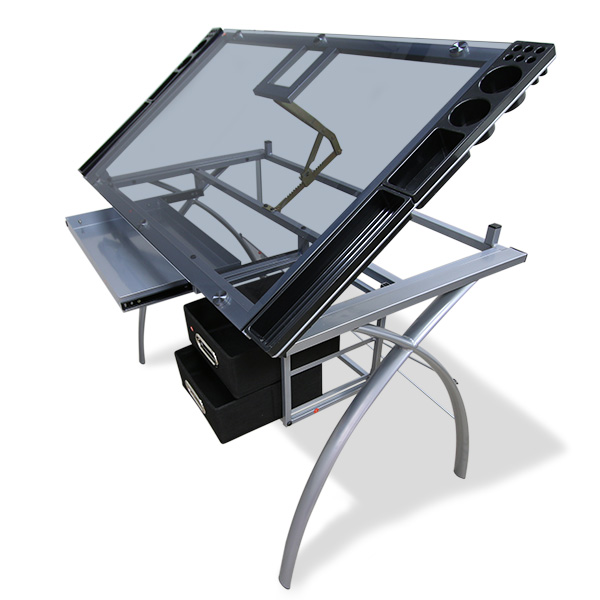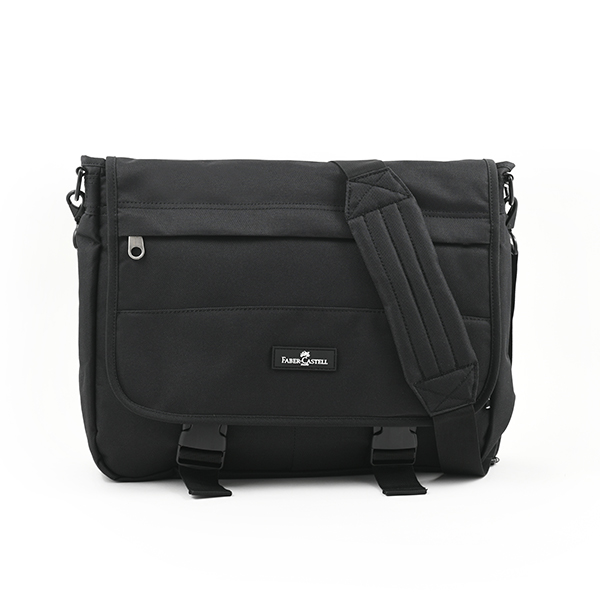
When starting my watercolour journey I had no idea how confusing it would be. I thought at least the process of procuring supplies would be easy – after all, you simply need brushes, paint and paper, right? Well, was I in for a surprise – as I’m sure many others starting out have found. The amount of choices out there with regards to art supplies are ginormous, and, to figure out which ones you are going to need is certainly a difficult task.
The conclusion I came to after many hours of researching, was that, of everything, paper is of the utmost importance in watercolour. And that is where the hard part starts – have you seen how many papers there are out there to choose from? How on earth does one figure out what you need when you have no idea what you need? Life is full of choices – but it can be difficult when you have no idea where to start. You will be faced with anything from sheets to pads to blocks to rolls; pulp to cotton; and then, of course, there’s the choice between hot press, cold press or rough. It can be mind-boggling. For this post let’s just look at hot press vs. cold press vs. rough.
The difference between hot press, cold press and rough.
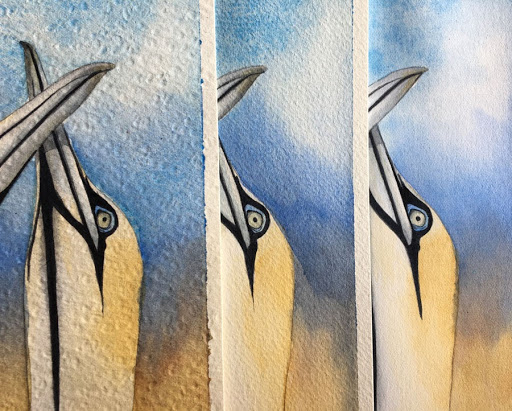
When faced with the options, ‘rough’ seemed quite self-explanatory but the other two had me quite lost. I’m a self-confessed detail freak – so scratching ‘rough’ from the list was a simple choice for my personal use, but then left with the other two (and multiple different opinions) I had no idea which of the remaining two to choose. In the end, it comes down to personal preference, so trying it yourself makes the most sense. It could be as simple as ‘buy some of each to try’, but we all know that good quality paper has a rather hefty price tag attached, and when your wallet is feeling a bit thin, it may not be possible – besides what will you do with the leftovers of the ones you don’t like?
I’m not going to get bogged down with the technicalities of the production of the different papers – in the end, it’s how the paper feels, looks and behaves that matters to us artists. So let’s look at them side by side and hopefully it can assist with your decision – before investing in something you may not end up being happy with.
The obvious difference is in the texture. The hot press is smooth with hardly any texture, the cold press has a rougher texture to it and of course the rough is very rough and has an almost a lumpy texture to it. Each of these will be better suited to a certain style and technique of watercolours and the effect you wish to achieve.
So I decided to do a few tests and hopefully, it could be of some help if you are trying to decide. I also then painted the same artwork on all three and I have to say it was very enlightening. I had previously worked on both hot press and cold press, each time though had been a unique artwork so the differences weren’t as clear as repeating the same thing.
Here are the things I chose to test out on the papers:
- Blending two colours in a wash.
- Dry brush strokes.
- Lifting an area of pigment while the paper is still damp.
- Lifting an area once the paper is completely dry.
- Glazing over a previous layer.
- Various pencil strokes as well as a shaded area with graphite pencil.
- Using my most granulating paint to see what effects result from the paper texture.
Hot Press

Hot press is the ‘smooth mover’ of the bunch. With very little texture, this paper is great for tighter, more realistic paintings and illustrations, allowing for a much more polished look to the finished piece. The smooth surface allows for an effortless flow of pigment, which is great for even blends. Hot press is the least absorbent of this trio which means it takes the longest to dry, but by saying that, it also means you have more time to play with the paint. Being that there is no texture to grip the pigment it can be tricky to control the paint, as the water and pigments tend to sit on the surface and not sink in – this does, however, mean that lifting techniques work well on this paper. Glazing and layering can be a challenge though as one has to be careful to not lift the previous layer. Hot press is also great for ink and watercolour combinations, as well as watercolour markers and pencils.
Cold Press

Cold press is the in-betweener when it comes to texture. It has enough texture to create some interesting effects but is still smooth enough to achieve quite a nice level of detail and smooth blends. Cold press has very good absorbency properties, while still allowing a reasonable amount of time to work with the pigments while still wet. This is by far the most popular choice in the watercolour community as it is the most versatile and adapts to most painting styles. One has to be careful when glazing on cold press paper as the new layer can disturb the previous one. Granulation shows up beautifully to create quite fine, interesting textures. I think this would be the best paper to start with as a beginner, and remains a favourite of many professionals.
Rough

Rough is the one with the most texture. Being the most absorbent of the three types it means you don’t have much time to play with the paint as the water can be absorbed quite quickly and pigments seep deeper into the paper (which also makes lifting more difficult if there is something you want to remove). Glazing, however, works well on this paper. It is great for wet in wet techniques and can create some lovely washes and effects. The pigments tend to settle in the valleys of the paper so granulation works very well and can create wonderful textures. If you want to do fine drawing and sketching with a high level of detail, then I would stay away from this paper though, as the texture can make it look gritty and messy. Rough paper is best for bold painting styles and dry-brush techniques work well on it.
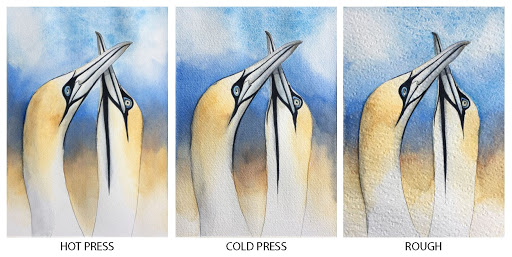
While I was working on my three paintings it got me wondering how other artists do things. Each of us has our personal preferences which are very dependent on our styles and I would love to hear from other artists who have perhaps tried the same experiment. Or perhaps there is someone out there with a much looser style who would be willing to try it and share their results with us.

